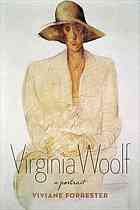
Virginia Woolf
A Portrait
کتاب های مرتبط
- اطلاعات
- نقد و بررسی
- دیدگاه کاربران
نقد و بررسی

March 30, 2015
Meandering through this stream-of-consciousness, highly imagistic portrayal of Virginia Woolf by late French literary critic Forrester (The Economic Horror) is like wandering lost through Woolf’s own labyrinthine writings. In prose by turns arresting (”and the miracle of creation often derives from its link with the general turmoil”) and pedantic (”maimed children faced with the passionate instincts of a personally and physiologically frustrated man”), Forrester captures the “moments of being” that animated Woolf’s life, from her childhood to her last days. Forrester ranges over Woolf’s painful and tormented marriage to Leonard Woolf, her deep anguish over her mother’s death, and her relationship with Vita Sackville-West, as well as how she wove the events of her life into her novels. Nimbly moving from one fragmentary impression to another, Forrester challenges the idea (proposed by Woolf’s nephew, Quentin Bell, in his biography of her) that Woolf was afflicted with mental illness and suicidal impulses when she was a teenager. Instead, Forrester offers the portrait of a woman who strove to strip away any illusions and capture the rhythms of reality in her writings.

March 15, 2015
Exploring the palimpsest of a literary life.Forrester (The Economic Horror, 1999, etc.), a French journalist, novelist, critic, and translator who died in 2013, has created a nuanced, impassioned portrait of Woolf (1882-1941) refracted through her most intimate relationships: notably, with her parents, Julia Duckworth and Leslie Stephen; her husband, Leonard; and her sister, Vanessa. Noting that there are many detailed studies of Woolf, Forrester is interested not in reprising the trajectory of her subject's life and work but rather in rescuing her from "countertruths" perpetuated by "all the entangled lives, the secrets, the lies, the dramatic misunderstandings" that emerged from memoirs, letters, diaries, and some of her biographers. She particularly excoriates Quentin Bell, Woolf's nephew and first biographer, for his "condescending tone, speaking of his aunt while scotomizing the writing, whose work, as he was fond of admitting coyly, he did not know very well." In the "quasi-official account of her life," Bell portrayed Woolf as sexually frigid, emotionally fragile, and often mad. Forrester, however, reads wild sensuality in her work, and she blames Leonard for quashing her desires. As Forrester sees him, Leonard was obsessive and neurotic, projecting onto his wife "what worried him about himself." He insisted that she was an invalid needing rest and isolation; he forced upon her a daily glass of milk, which Virginia despised. He also took her to many doctors, eliciting their opinions about whether she should have a child. There was no consensus, but he and Vanessa decided it would be better if she did not. Forrester convincingly argues that calling Woolf "mad" is "a dangerous simplification"; instead, the author sees her anguish and rage precipitated by "clearly definable causes" such as "the despotic brutality with which she has...been denied children." An engrossing, intimate, and deeply empathetic portrayal of a brilliant and enigmatic woman. The book won the 2009 Prix Goncourt in France.

April 1, 2015
Essayist, novelist (The Economic Horror), and literary critic Forrester (1925-2013) contends that Virginia Woolf's genius and "the timelessness, the power, the marvel of her work...becomes secondary" and trivialized when considered amid the assertions made in Quentin Bell's authorized biography of Woolf, his aunt. Additionally, according to Forrester, Bell's account exactly reflects Leonard Woolf's perception of his wife's madness. Through careful reading of Virginia's diaries and letters, as well as the memoirs, autobiographies, journals, and letters of her circle of family and friends, the author presents a compelling argument to discredit the myth of madness created by Leonard and supported by Bell. The intriguing text encourages sympathy for Woolf and her struggle to understand her place in the world; this struggle is portrayed in her body of work--and Forrester extends her argument with many examples. The volume is divided into five parts loosely chronicling Woolf's life (1882-1941) while providing illuminating descriptions of her father, Leslie Stephen; Leonard; and her sister, Vanessa Bell. VERDICT Readers interested in Virginia Woolf, the Bloomsbury circle, and early 20th-century modernist writers will require this biography.--Kathryn Bartelt, Univ. of Evansville Libs., IN
Copyright 2015 Library Journal, LLC Used with permission.

























دیدگاه کاربران